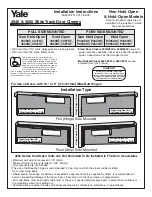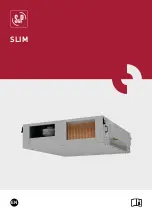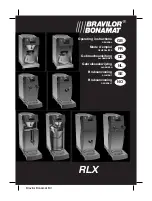
14
not sacrifice any penetration because during the 50% on time at 130 amps, the rod burns as hot and deep as
it normally would on a classic stick welder at 130 amps.
This may prompt you to ask: If the amperage range of the rod is 80 or 90 to 160, why not set the welding
current at 160 amps so the Inverarc sets the background current to 80 amps? The amperage ratings,
essentially, would be well within the specs then. This is absolutely possible and a good setting. However,
this setting is very hot and metal transfer occurs the entire time. This, paired with a 3-4 Hz pulse frequency
makes for a very high travel speed in the horizontal or flat position. Plus, the heat input into the work piece
is enormous.
Knowing what we know now, let’s go back to the beginning and look more closely at the advantages of
pulse welding.
Pulse welding includes ALL of the following advantages, but
not all at the same time
.
Visually spatter free (MIG & TIG only, though still reduced spatter when stick welding)
Higher travel speeds—
As just covered, with the right settings, the travel speed can be greatly
increased.
Deeper penetration—
If you choose the same or similar settings to the ones for a higher travel speed,
the overall heat input and penetration increases also.
Less heat input, which equals less material distortion—
More like the first example about setting the
welding current to 130 amps.
Ability to weld thinner material than you could without pulse—
To achieve this, you would reduce the
max amperage even more. For example, 110 amps or 120 amps with a 55 amp background current,
which makes for an average heat input of (110 + 55)/2 = 82.5 amps. With this setting, you can weld
materials with a 1/8” rod when you would normally need to weld with a 3/32” rod.
Superior control of the weld puddle, especially when welding out of position—
You have better control
on lower pulse frequencies because the puddle has time to partially solidify.
Easily join materials of differing thicknesses—
More like the first example about setting the welding
current to 130 amps.
Better gap bridging when welding materials with a poor fit up—
More like the first example about
setting the welding current to 130 amps.
Ability to make leak-tight welds—
Spray arc or stick welding arc, in general, works better at making
leak tight welds that short arc MIG, for example.
Improved bead appearance—
Pulse welds, especially lower frequency pulse welds (2 Hz or less) make
really nice and defined ripples on the top of the weld bead; welds like this are generally thought to be
aesthetically appealing.
Ability to use one size bigger welding rod than normal—
To achieve this, you would reduce the max
amperage even more. For example, 110 amps or 120 amps with a 55 amp background current, which
makes for an average heat input of (110 + 55)/2 = 82.5 amps. With this setting, you can weld
materials with a 1/8” rod when you would normally need to weld with a 3/32” rod.
Weld on thinner material without burning through—
More like the first example about setting the
welding current to 130 amps.
Easier for beginner welders—
The pulsed stick process is extremely forgiving.
Summary of Contents for Inverarc 200 TLP
Page 4: ...4 Fig 1...
































